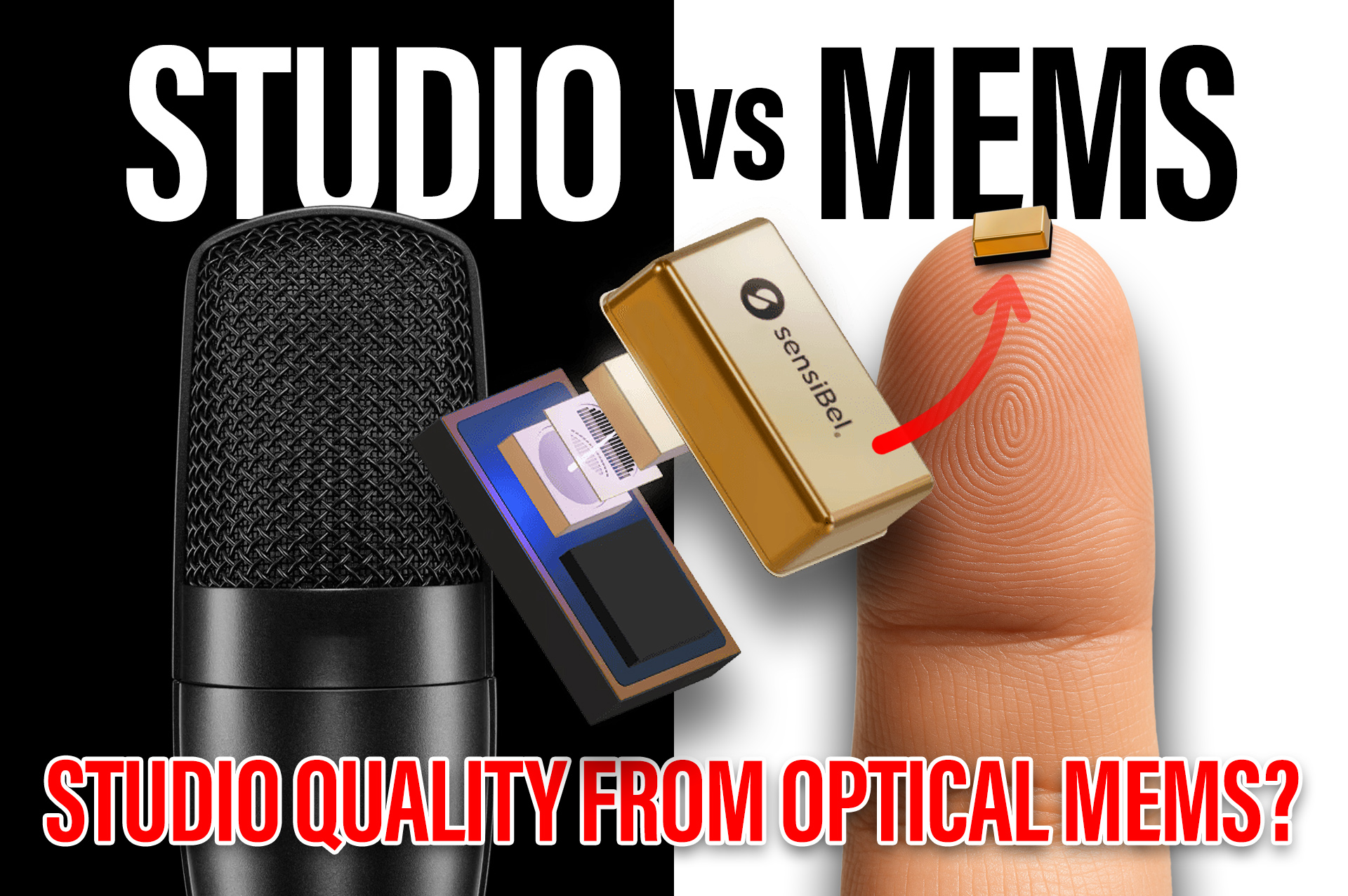Products
Solutions
Published
11 July 2025
Written by Harry Forster
What happens when you shrink studio-quality sound into a chip-sized package and ditch the traditional microphone tech for lasers? You get the optical MEMS microphone—a revolution in how engineers think about embedded audio.
At Sensors Converge 2025, we met with SensiBel, the company behind the SPM-100B, a MEMS microphone that doesn’t use piezoelectric or capacitive sensing. Instead, it uses laser interferometry to detect membrane movement, offering a flat frequency response down to 10 Hz and a signal-to-noise ratio (SNR) over 80 dB. That’s not just good for a MEMS device—it’s good, period.
Here’s why engineers should care: The optical MEMS microphone makes high-fidelity audio accessible for compact, low-power applications. Traditional MEMS microphones often suffer from noisy output or peaky frequency curves. But SensiBel’s tech eliminates that, bringing you the kind of sonic detail you’d expect from a large diaphragm studio mic, without needing 48V phantom power or an external ADC.
How does it work? Inside the optical MEMS microphone, a laser (technically a VCSEL) is pointed at a tiny membrane. As sound waves hit the membrane, its motion disturbs the reflected beam. A photodetector picks up those changes, and digital signal processing turns them into clean, studio-grade audio. It’s like LIDAR for your ears.
Better still, integration is easy. The SPM-100B supports I²S, PDM, and TDM outputs—so whether you’re prototyping wearables, building smart speakers, or trying to sneak pro sound into a handheld recorder, this optical MEMS microphone slots in without fuss. It even runs on 1.8V, making it friendly for low-power embedded systems.
During our demo, we listened to a real-time recording made using SensiBel’s Aurora eval kit. Honestly, we were blown away. No harsh treble spikes, no muddy mids—just clean, flat, dynamic audio. It’s the kind of performance you normally only get from a bulky condenser mic the size of a small thermos.
The applications go beyond consumer devices. Think next-gen voice interfaces, industrial audio monitoring, medical diagnostics, or embedded AI systems that need to “hear” without distortion. Any use case where high-quality sound matters—but space and power are limited—is a candidate for an optical MEMS microphone.
If you want to try it out, SensiBel’s evaluation kits are available now. And trust us—it’s one of those rare tools that might just level up your entire design.
Comments are closed.

Comments
No comments yet